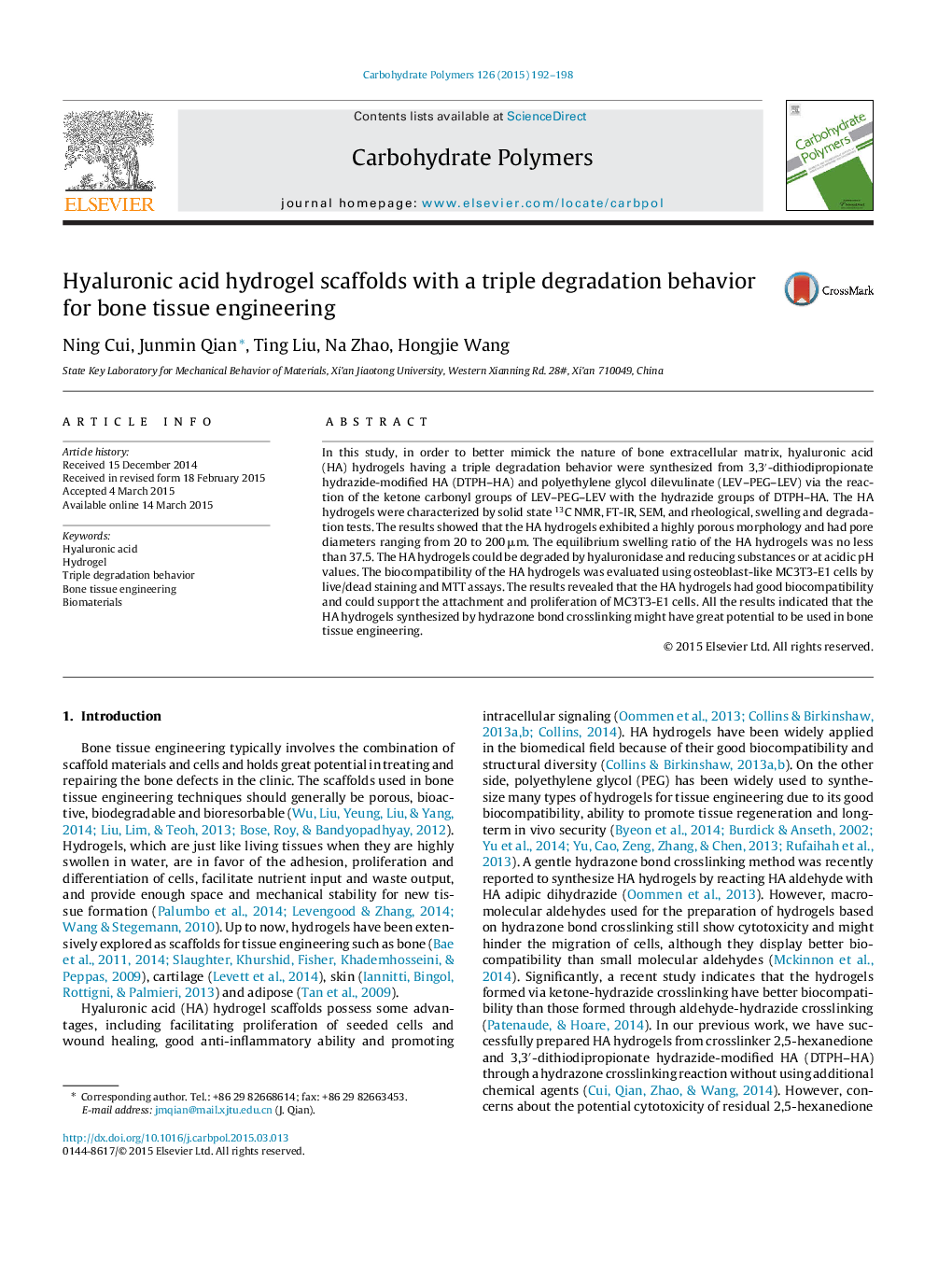| Article ID | Journal | Published Year | Pages | File Type |
|---|---|---|---|---|
| 1383624 | Carbohydrate Polymers | 2015 | 7 Pages |
•Hyaluronic acid hydrogels were prepared by hydrazone bond crosslinking.•Polyethylene glycol dilevulinate was an effective crosslinker.•Hyaluronic acid hydrogels showed a triple sensitive degradation behavior.•Hyaluronic acid hydrogels exhibited good biocompatibility.
In this study, in order to better mimick the nature of bone extracellular matrix, hyaluronic acid (HA) hydrogels having a triple degradation behavior were synthesized from 3,3′-dithiodipropionate hydrazide-modified HA (DTPH–HA) and polyethylene glycol dilevulinate (LEV–PEG–LEV) via the reaction of the ketone carbonyl groups of LEV–PEG–LEV with the hydrazide groups of DTPH–HA. The HA hydrogels were characterized by solid state 13C NMR, FT-IR, SEM, and rheological, swelling and degradation tests. The results showed that the HA hydrogels exhibited a highly porous morphology and had pore diameters ranging from 20 to 200 μm. The equilibrium swelling ratio of the HA hydrogels was no less than 37.5. The HA hydrogels could be degraded by hyaluronidase and reducing substances or at acidic pH values. The biocompatibility of the HA hydrogels was evaluated using osteoblast-like MC3T3-E1 cells by live/dead staining and MTT assays. The results revealed that the HA hydrogels had good biocompatibility and could support the attachment and proliferation of MC3T3-E1 cells. All the results indicated that the HA hydrogels synthesized by hydrazone bond crosslinking might have great potential to be used in bone tissue engineering.
